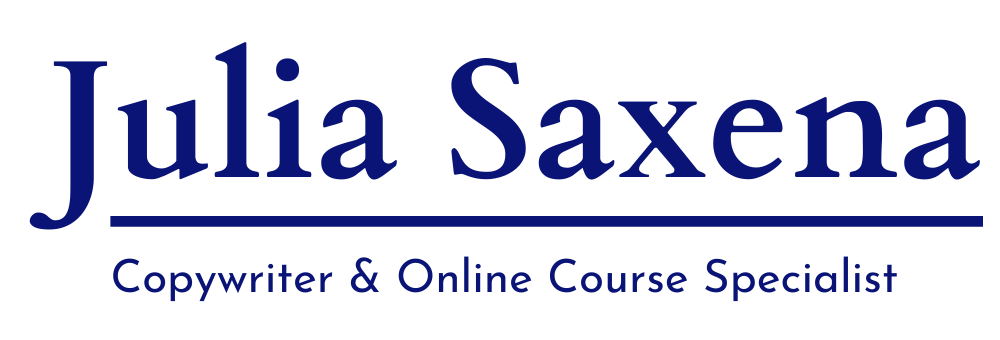When you think “brand,” you’re probably glancing at the Starbucks cup in your hand or looking down at your Nike shoes. Big businesses have brands.
But, you’re a brand, too! Seriously.
Even if only your mom, dad, and best friend know about your business, you’re a brand.
Branding is how your audience perceives you (no matter how small this audience is). They define what your brand is … if you want it or not.
So, by proactively working on your brand, you determine how you’re perceived. But this is where it gets tricky.
What business owners get wrong about branding
Three things mainly…
Approaching it backward
Building your brand isn’t picking out a logo and color pallet. And it’s not about finding the perfect design template for your website. That’s how many businesses start, though. (It’s what I did!)
From there, they eventually (or never) figure out what they stand for and how they’re going to use their brand strategically.
I realized that a pretty online facade doesn’t mean s@$% if there’s no substance to it. The style choices are the last thing to worry about.
It’s not something to tick off your to-do list
Building a brand doesn’t happen from one day to another. It takes consistency. You have to live it every day. With every tweet you send, every picture you post on Instagram, every blog post you publish, you lay another small brick. Over time people will take notice and recognize what you’re building.
It’s not a fluffy concept
I know it can seem that way. Branding is an abstract term, and you can’t pinpoint it to one thing. That doesn’t mean defining your brand will be all fluffy words with ultimately no meaning or purpose. Branding should be actionable. And that’s what we are going to work on here.
How to start developing your brand
Building a brand is like creating your own little universe. You get to decide what’s important, what’s not, what you stand for, and how your business will behave.
But, all this can’t just happen inside your head. You’ve gotta write it down.
When you finally pull out the vague ideas you’re holding in your mind, you’re forced to evaluate them. To manifest them on the page, they have to turn into coherent sentences. That’s when your brand becomes real.
This is a huge step… not to be underestimated.
6 essential elements of a starter brand strategy
I’ve followed this process for my business and many of my clients when we started to work together. The aim is to clarify what you’re all about and ground your branding, so it’s consistent over time.
I’d recommend setting aside half a day to really work through this. It’s gonna be challenging but worth it. That’s how I felt, at least.
Bonus points if you have a business partner or anyone else who can be your sounding board as you tackle these questions.
To make this easier, I’m giving you examples of my brand and one that y’all know for sure.
1. Vision
Your vision is the ideal future state for your business. It describes where you’re headed. To arrive at your vision, let’s do a short visualization exercise where you can let your creativity run free and dream big.
Get comfy on your rocking chair/ couch/ bed, close your eyes, and imagine yourself 10 years into the future…
- Where are you, and who is with you?
- What does your workday look like?
- What kind of projects are you working on?
- What are you known for?
Examples:
Julia Saxena: I want to empower people to be their own boss and achieve financial independence.
Starbucks: To establish us as the premier purveyor of the finest coffee in the world while maintaining our uncompromising principles while we grow.
2. Mission
Your mission is your purpose, the essence of your business. It gives you a sense of direction and acts as a filter for your business decisions. If a shiny new project isn’t aligned with your mission, then is it really worth pursuing?
Questions to ask yourself:
- Why do you do what you do?
- What makes you get out of bed every morning?
- What are you here to accomplish?
Examples:
Julia Saxena: My mission is to help you reach the people you need to reach. And to convert the clients you’ve been dreaming of. So you can leave your mark in this world.
Starbucks: To inspire and nurture the human spirit – one person, one cup and one neighborhood at a time.
3. Values
Your values are the identity of your business. Something you live by every day. They are already reflected in your behavior, but now it’s time to write them down. Think of your values as your company culture in words. They align everyone who’s working for or with you. And when you’re hiring someone, they’ll help you identify if the person is a good fit.
Questions to ask yourself:
- What is more important to you in your business than making a quick buck?
- What behaviors do you want to see from yourself and other team members on a daily basis?
- What are you willing to hire/fire on?
- Which values will you still believe in after 5/10 years?
Narrow it down to the top 3-5 values!
Examples:
Julia Saxena: Invest in relationships. Always provide value. Solve problems proactively. Share what I know. Learn something new every day.
Starbucks: Create a culture of warmth and belonging. Act with courage, challenging the status quo and finding new ways to grow our company and each other. Be present, connect with transparency, dignity and respect. Deliver our very best in all we do, holding ourselves accountable for results.
4. Ideal Clients
Why do you need to define your ideal client? Can’t you just work with everybody? Nope! Sorry!
When you try to appeal to everyone, your messaging will be general and vague … so you don’t step on people’s toes. In the end, nobody will be able to identify with what you are saying.
But, when you know exactly who you are talking to, you can be hyperspecific and personal. You’ll get to know your ideal clients intimately until they feel like you can read their minds.
Questions to ask yourself:
- Who are you talking to?
- What problems and challenges are they facing?
- What have they tried to fix those problems, and how have other solutions failed them?
- What are their goals? What do they want to achieve?
- What’s holding them back from achieving this?
- Who would you never want to work with? (your dreadful clients)
Examples:
Julia Saxena: Mission-driven creators, entrepreneurs, and business owners who want to make the world a better place.
Starbucks: High income, high spenders. Educated professionals. Urban-ish, on the go. Socially conscious. Laidback but driven.
5. Value Proposition
Your value proposition is your promise to your ideal clients. It sums up what they can expect to get out of working with you. Ideally, you’ll want to make it as tangible and measurable as possible.
Questions to ask yourself:
- What will your clients walk away with?
- What is the measurable outcome your clients can expect?
- What do you do better than ANYONE else? Can you prove it?
- What makes you different? (e.g., unique process or tools to deliver your offer)
- What other intangible or unexpected problems does buying your product or service solve?
Examples:
Julia Saxena: A website, landing page, or sales page that converts the right customers with clear, persuasive messages and communicates the essence of your brand.
Starbucks: Drinking coffee as an experience. Affordable luxury. Becoming the “third place” (besides home and work)
6. Brand Voice
Your brand voice is the personality and emotion infused into your communication. Being consistent with your voice is important for developing brand recognition with your audience. If your messaging changes frequently, your ideal clients will have a much harder time figuring out what you’re all about.
Questions to ask yourself:
- If your brand were a cartoon character, superhero, or any fictional character, who would it be?
- If your brand were a real person, what’s his/her personality?
- How do you sound when you’re texting a friend?
You can also ask some of your clients to describe your brand in 3-4 words. That can be incredibly insightful.
Examples:
Julia Saxena: Fun. Casual. Encouraging. Nerdy
Starbucks: Informal. Genuine. Friendly
Putting it all together: Your Elevator Pitch
Remember that branding should be actionable? Well, a solid elevator pitch that you can whip out whenever someone asks you, “So, what do you do?” definitely is. This is your business summarized in one or two sentences. Memorize it and repeat it over and over again.
Follow this three-step structure to write your elevator pitch:
- Main pain point for your ideal clients
- How you solve this problem
- The tangible outcome they can expect
Examples:
Julia Saxena: A website is crucial for creators and entrepreneurs to market their business, but it often doesn’t convert as well as it could. I write clear, persuasive, on-brand messages that resonate with your target audience and turn your website into a 24/7 salesperson so you can fulfill your mission.
Starbucks: Having a coffee is about so much more than getting an energy kick. We create a comfortable place for you to work, study, socialize, or just have some quiet time, all while enjoying your favorite hot beverages.
Got stuck? Need help figuring out your brand?
Send me an email at julia@juliasaxena.com. I’d be happy to guide you through this process. It’s more fun doing it together!






